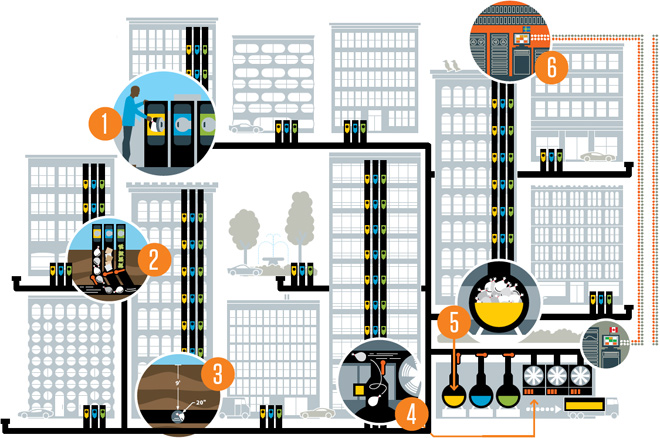Muell-Rohrpost in Montreal 1 Deposit portholes
Muell-Rohrpost in Montreal
1 Deposit portholes
Instead of using trash cans, people will put garbage in intake hatches, known as portholes, 4 to 5 feet high and 18 to 24 inches wide. Separate inlets can be created for waste, recycling, and compost. Most will be on public property, but businesses and residents can opt in.
2 Release points
Sensors in the deposit portholes will relay load information back to system operators. When it’s time to fire up the fans and flush the trash, it’s done by waste type to ensure that only one kind of material is traveling through the pipes at any given time.
3 Tubes
Workers in Montreal are burying nearly 4 miles of 20-inch-wide steel pipe anywhere from 3 to 9 feet underground — below the frost line to avoid potential cold-weather freeze-ups. The network will eventually serve some 8,000 households and businesses.
4 Suction
Large industrial fans will create 45-mph winds to pull refuse through the pipeline. Airspeed sensors alert operators if bulky items get stuck — pizza boxes are a common headache. Obstructions can usually be cleared simply by cranking up to gale force.
5 Collection facility
The refuse will be carried to a central collection facility serving all portholes within a 2-mile radius. There, automated software directs the material into the appropriate dumpster, which then gets trucked to a recycling center, landfill, or composting plant.
6 Central command
The system will be controlled remotely from Envac HQ in Stockholm, with only a small maintenance staff in Montreal. Operators can speed up collection to meet extra demand during, say, a street fair or switch on generators during a power outage.

